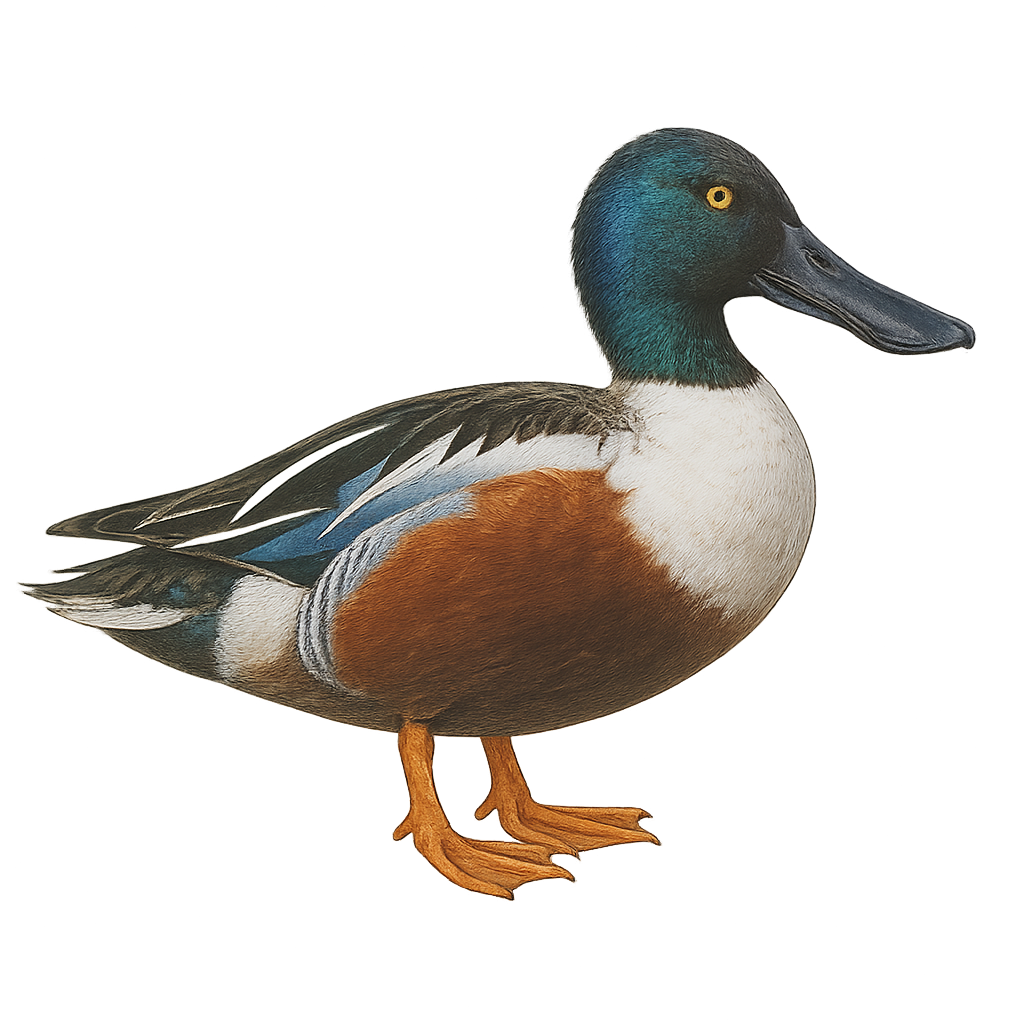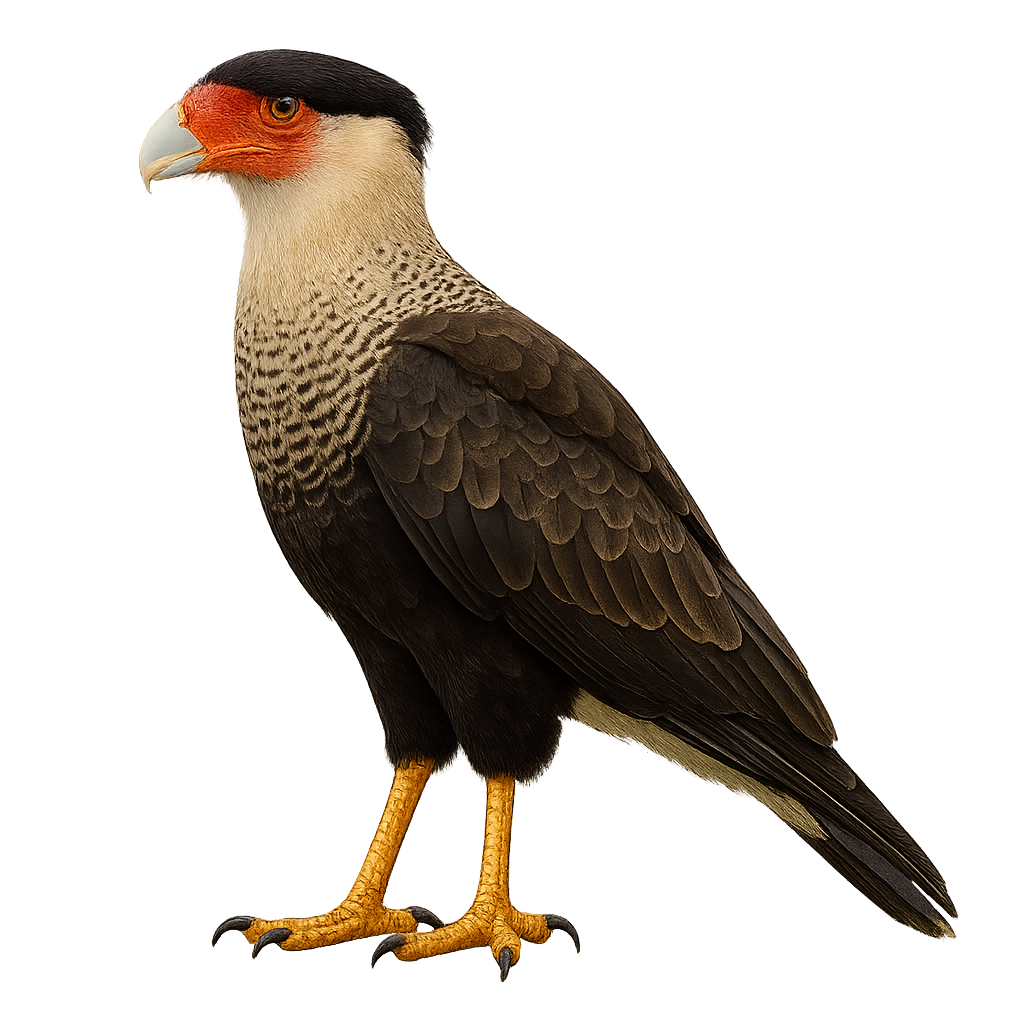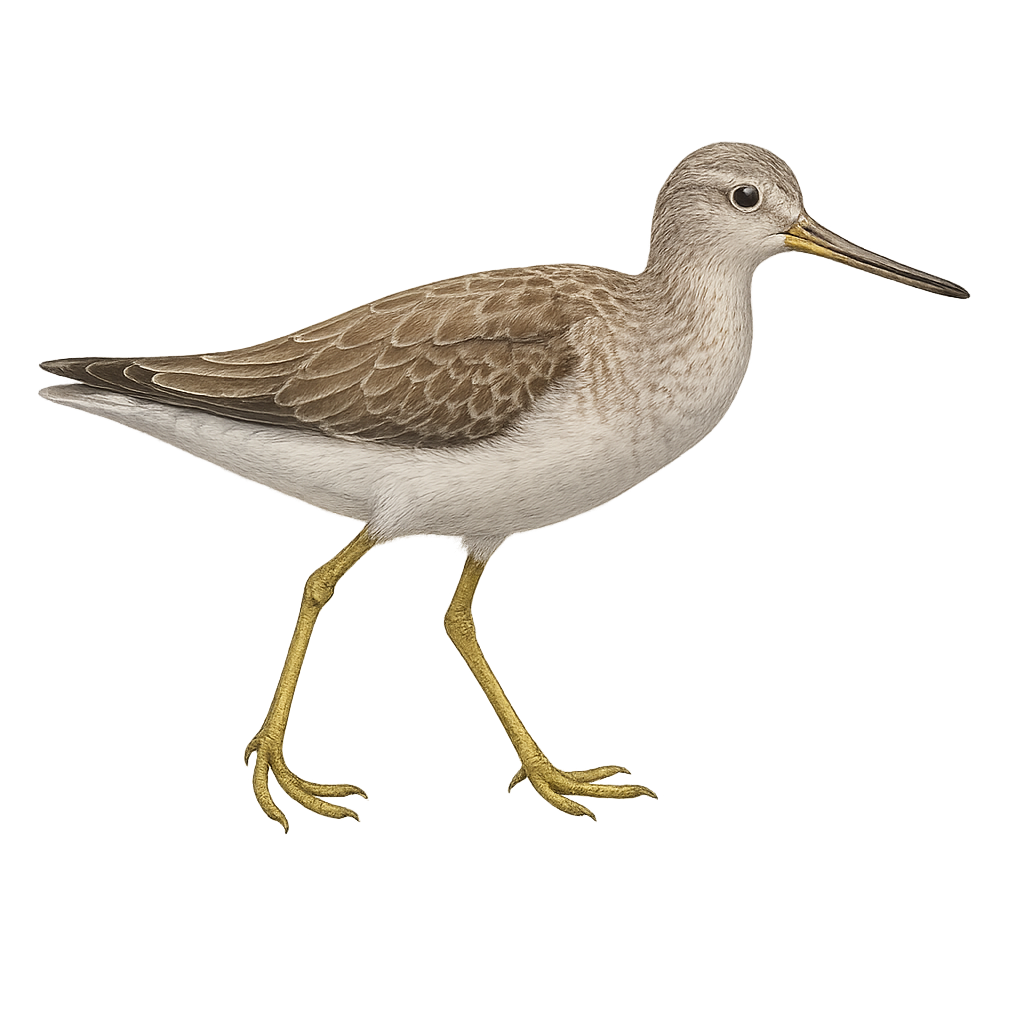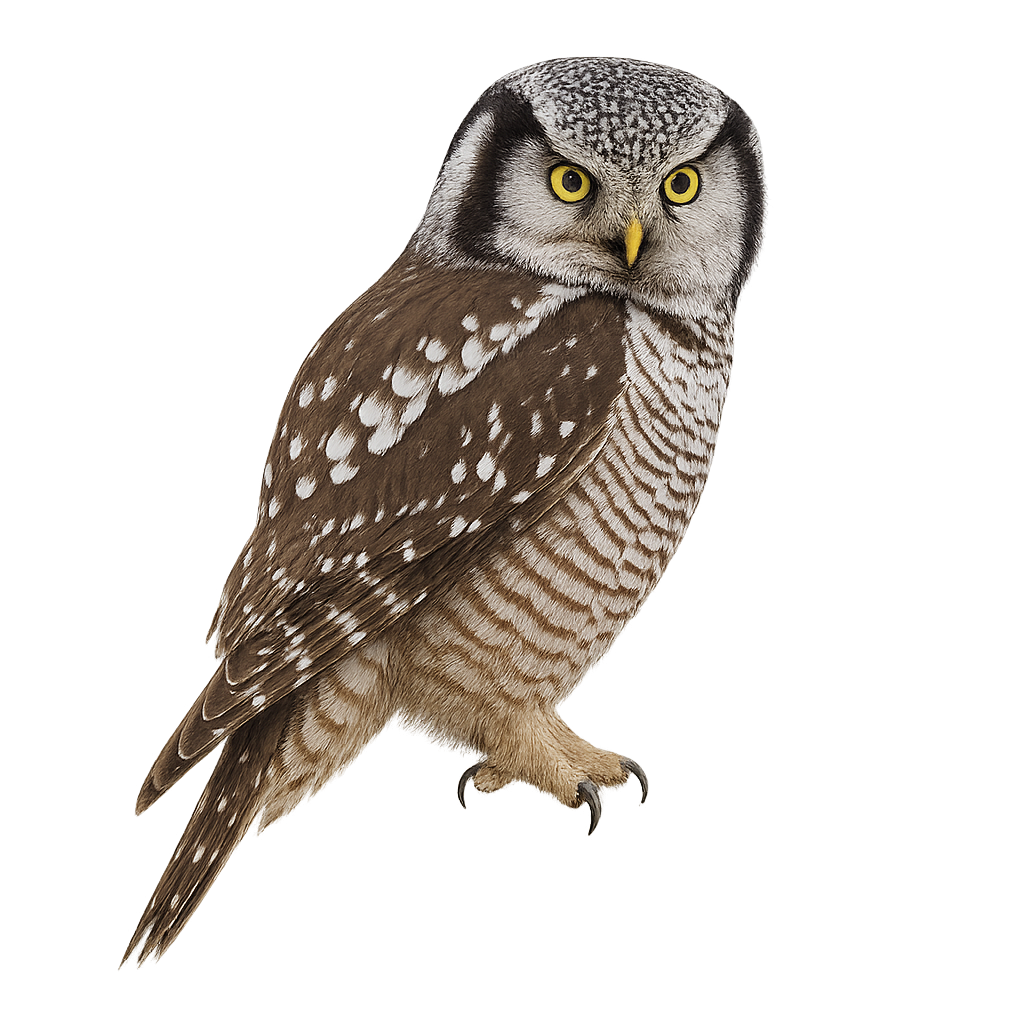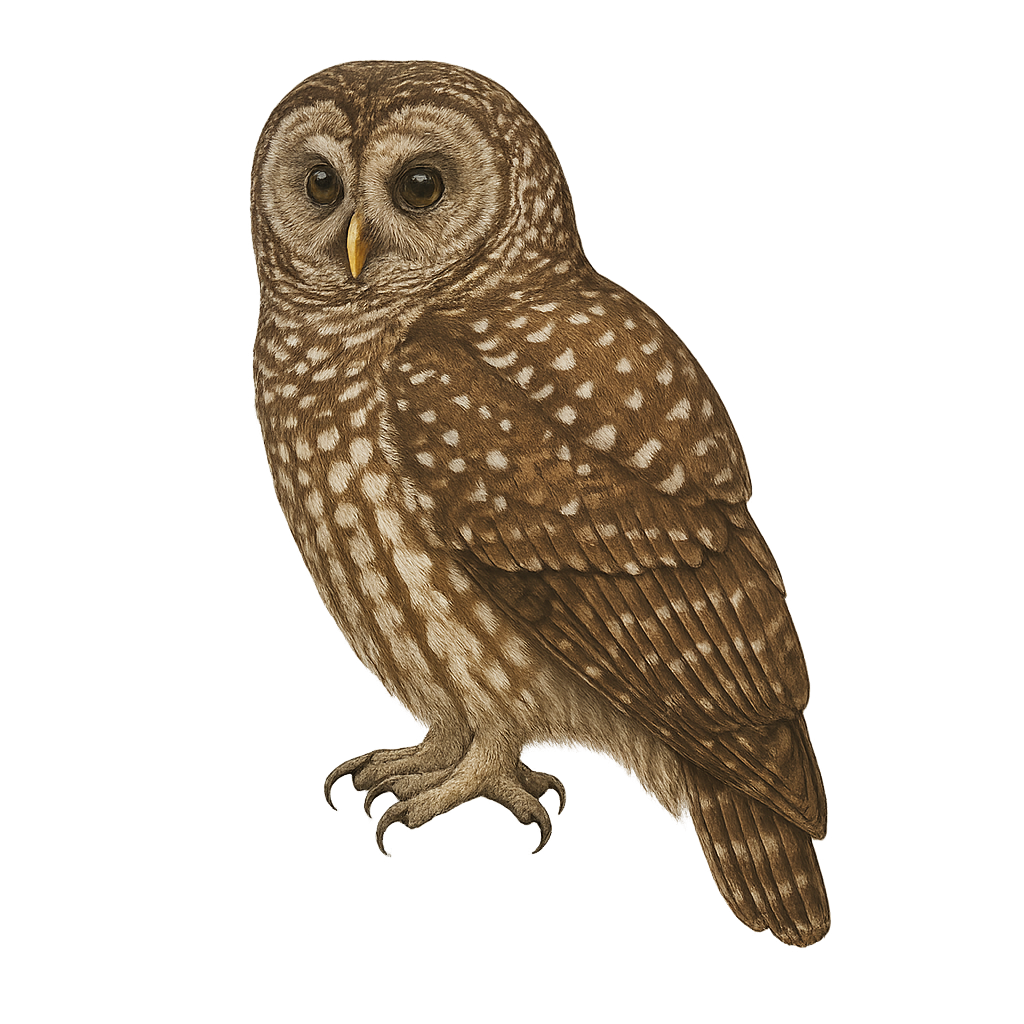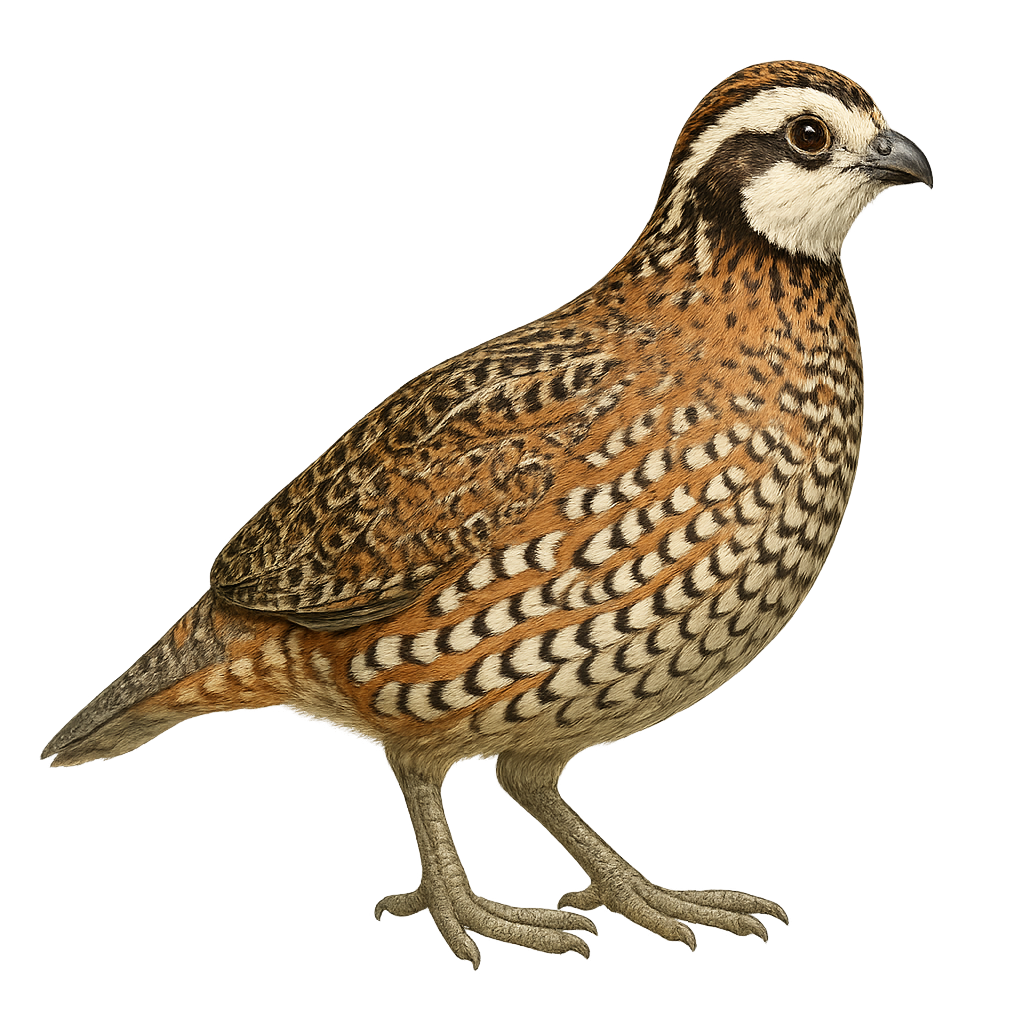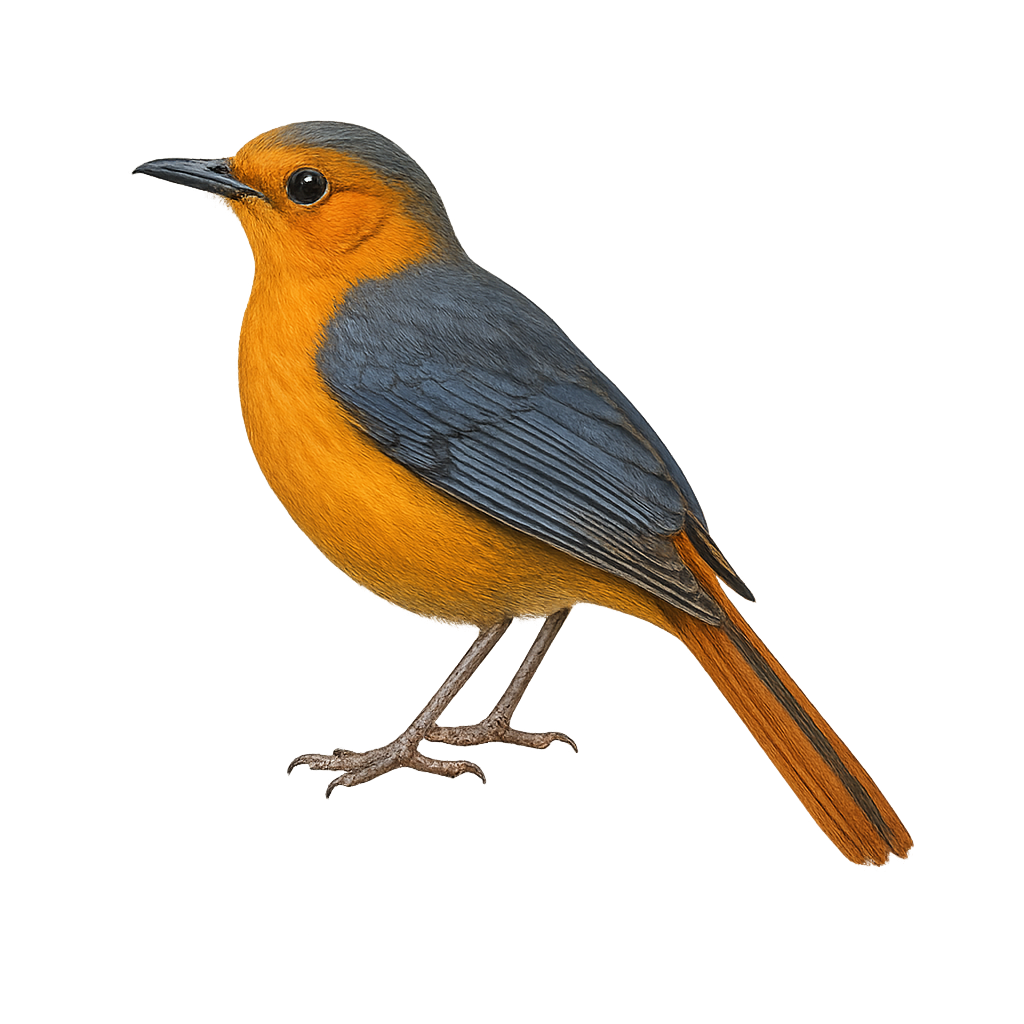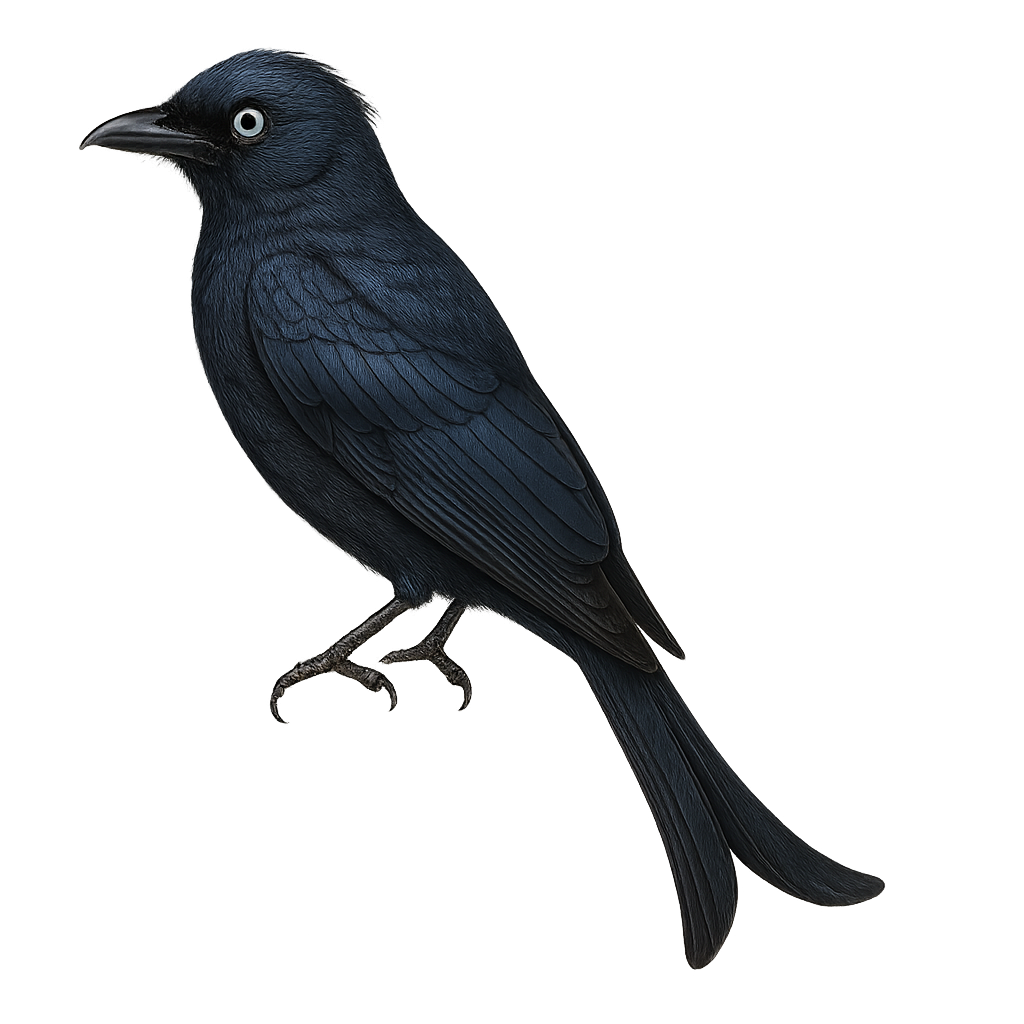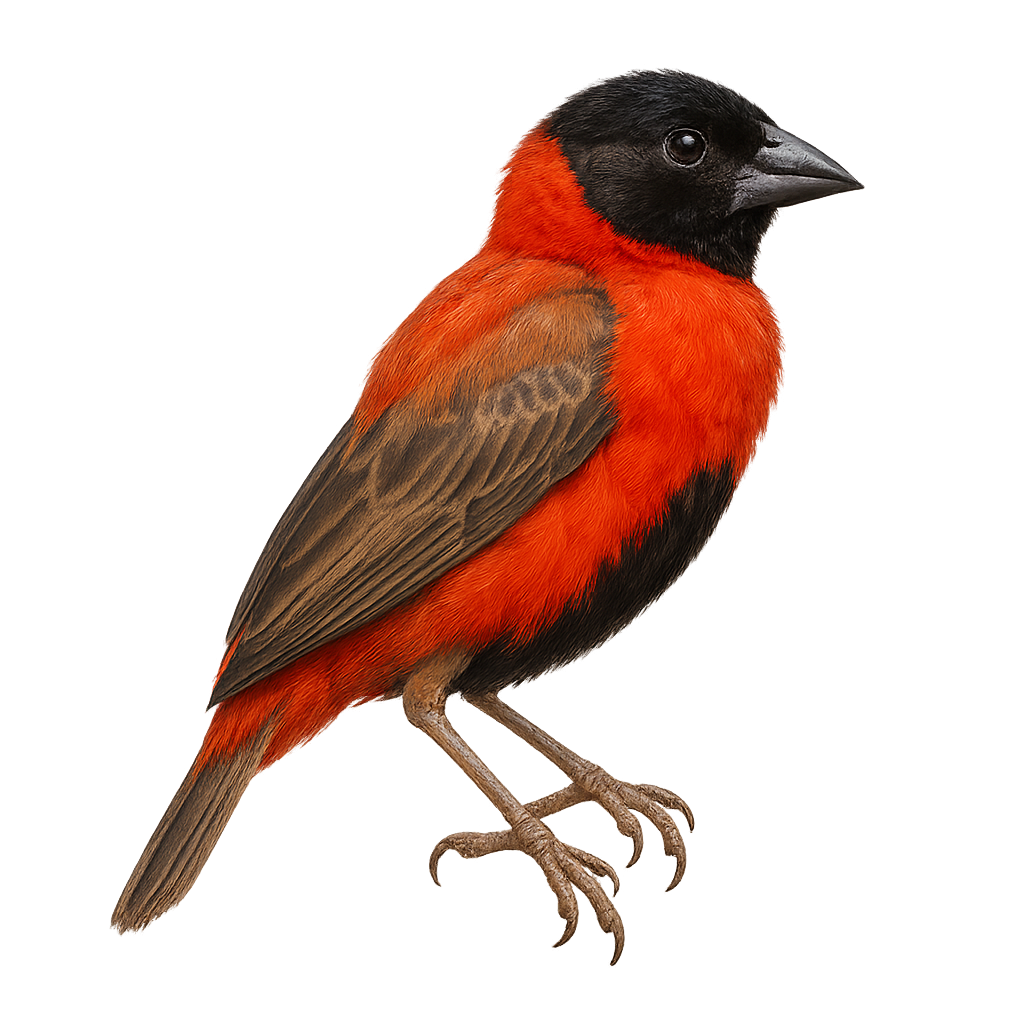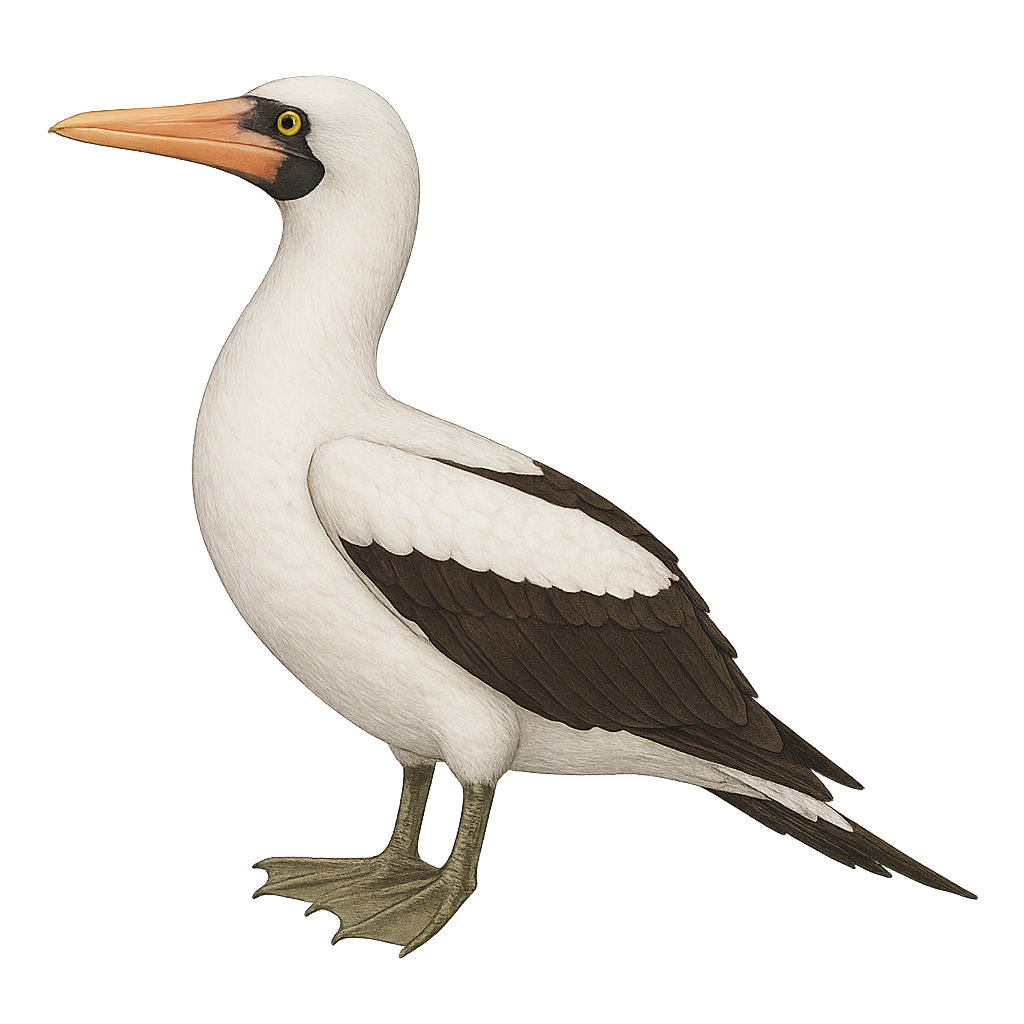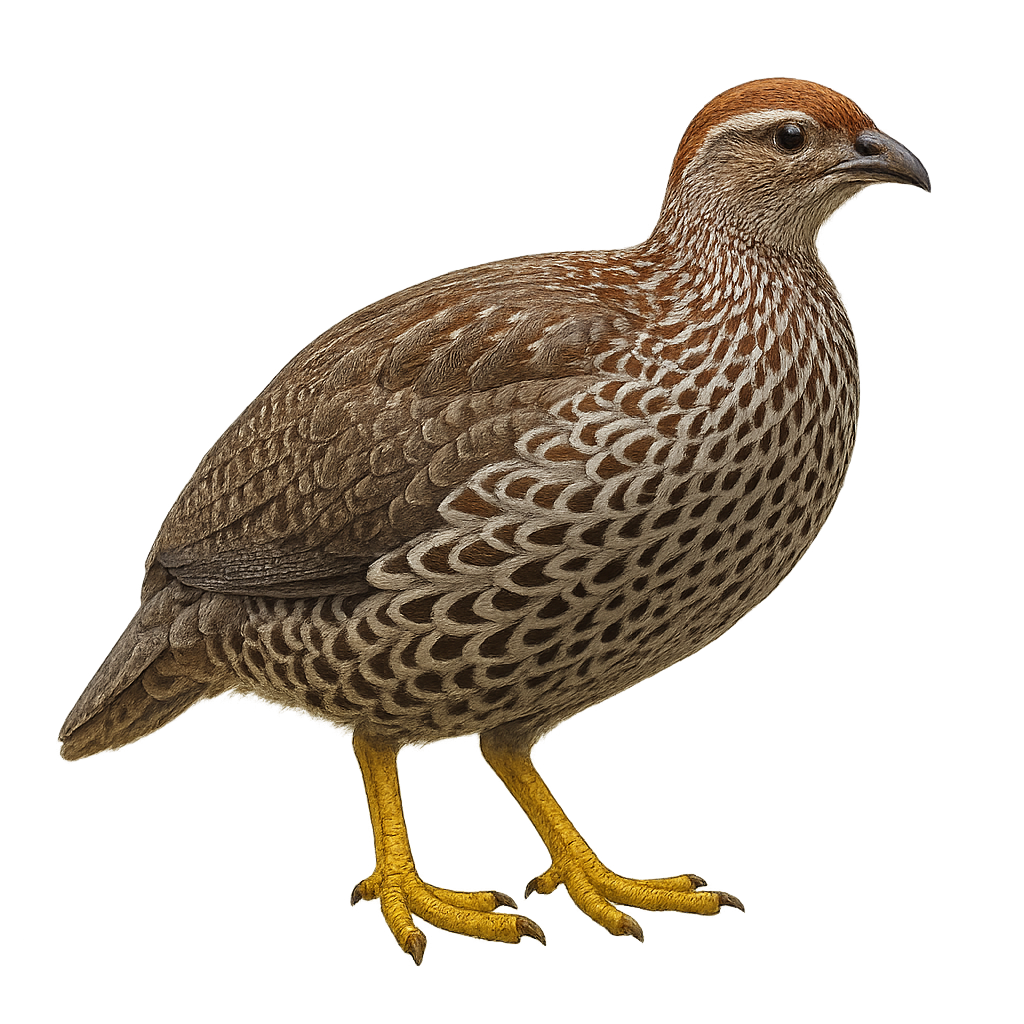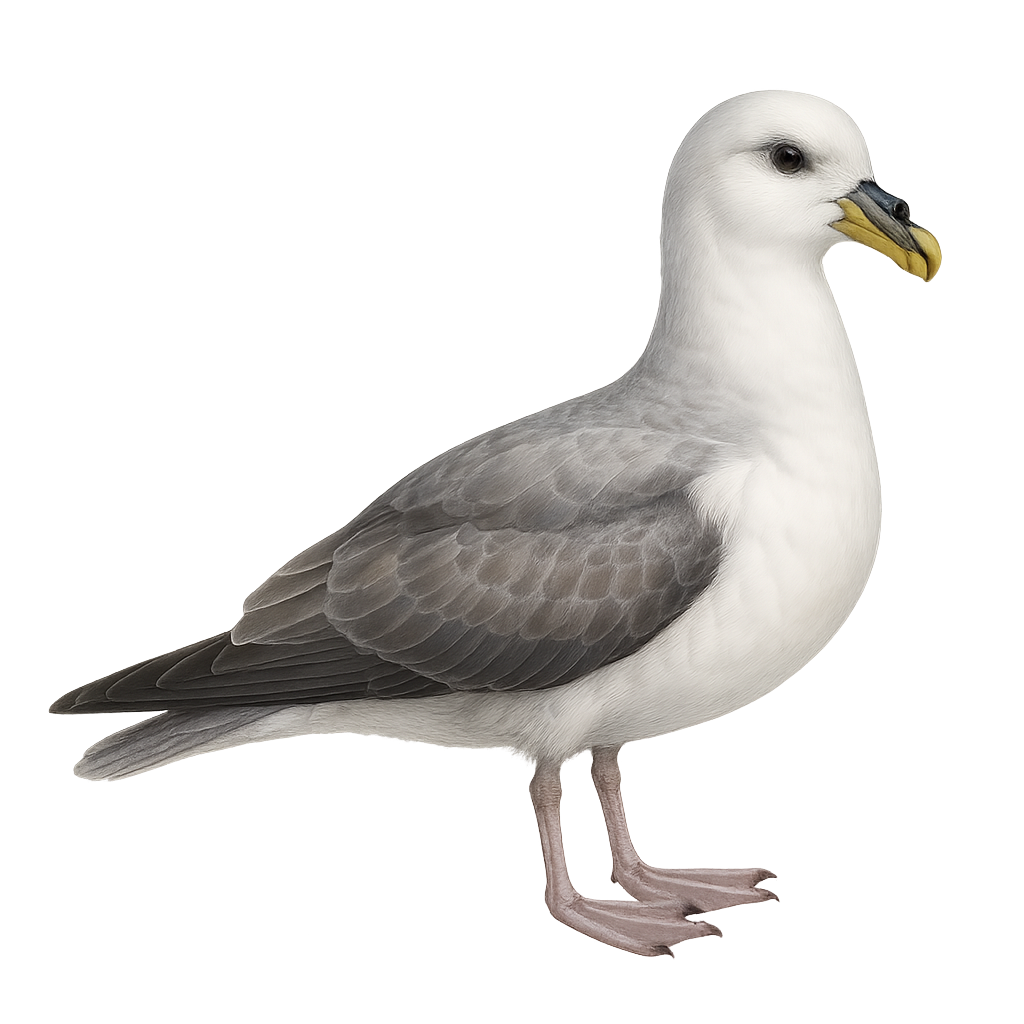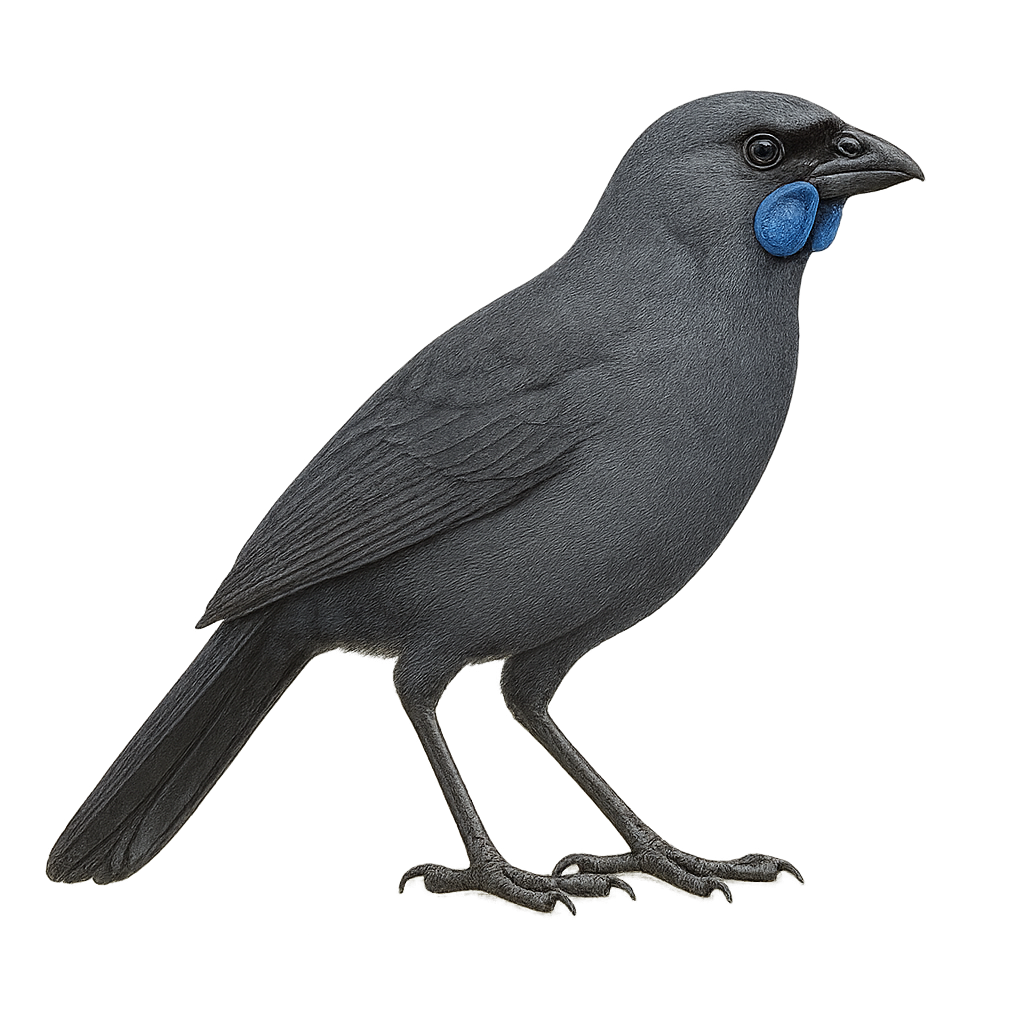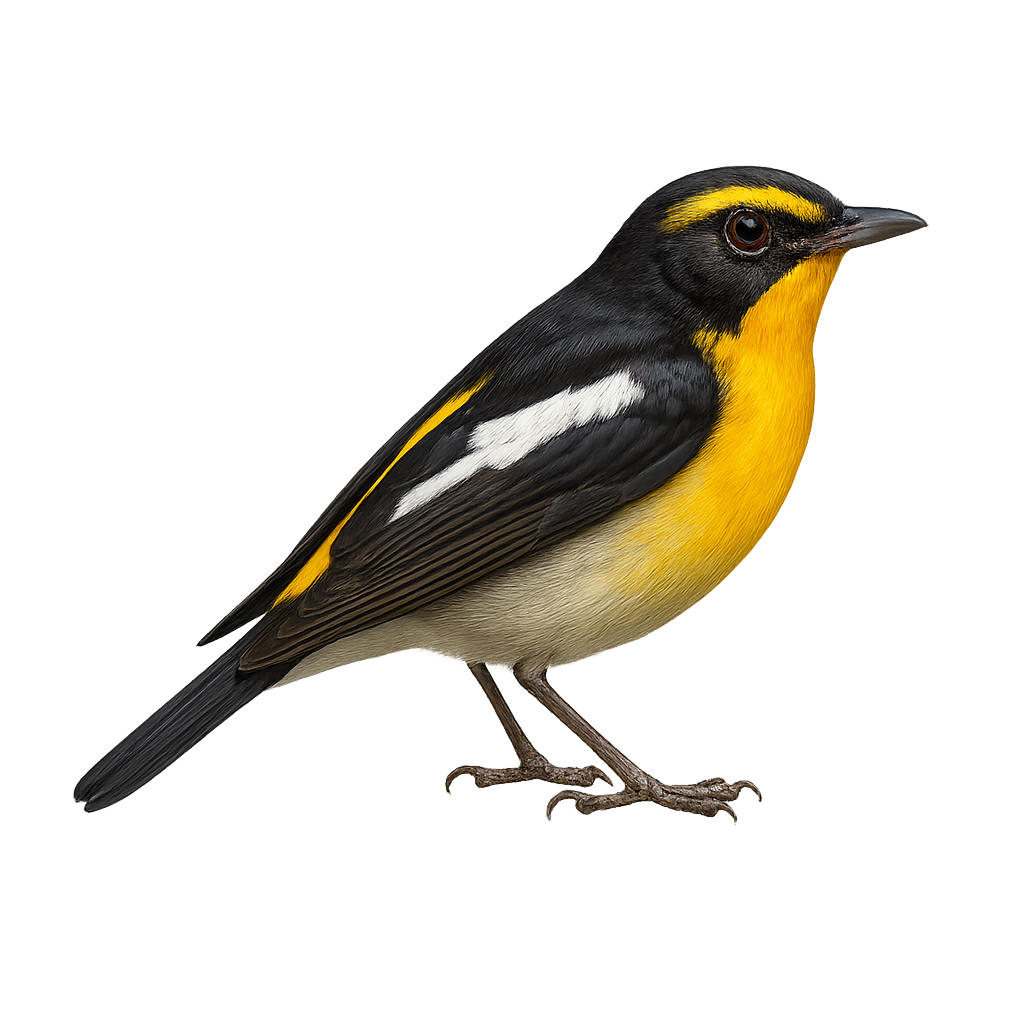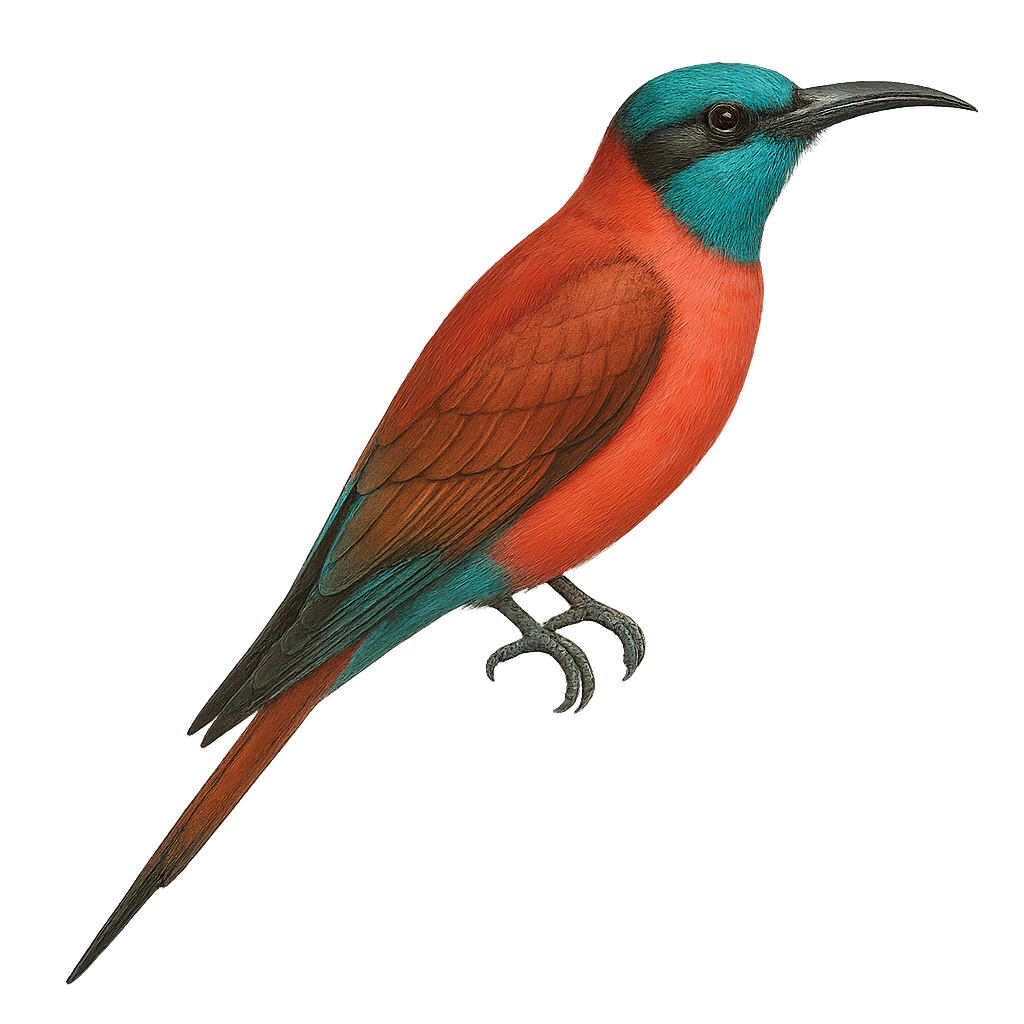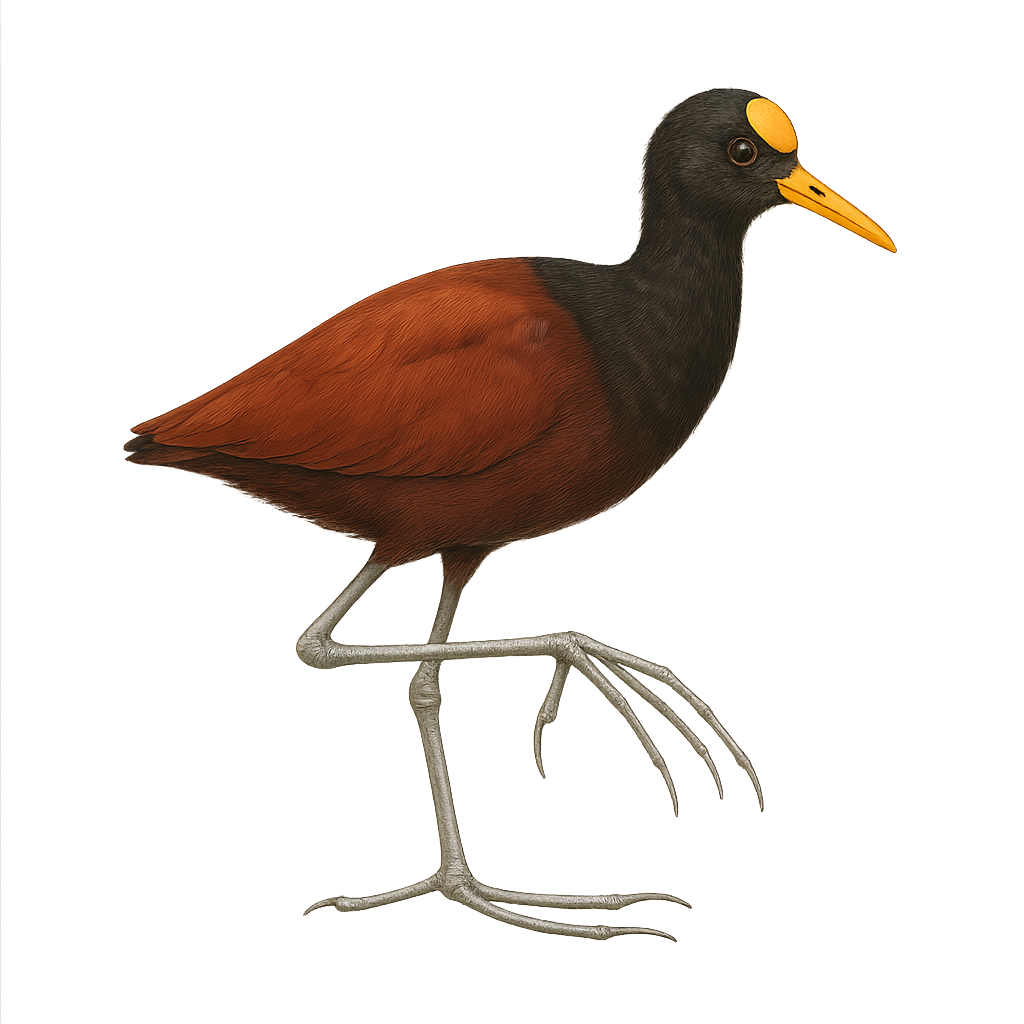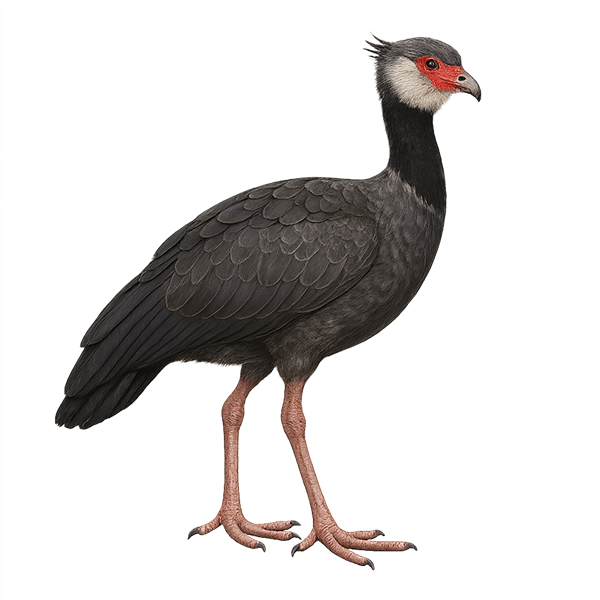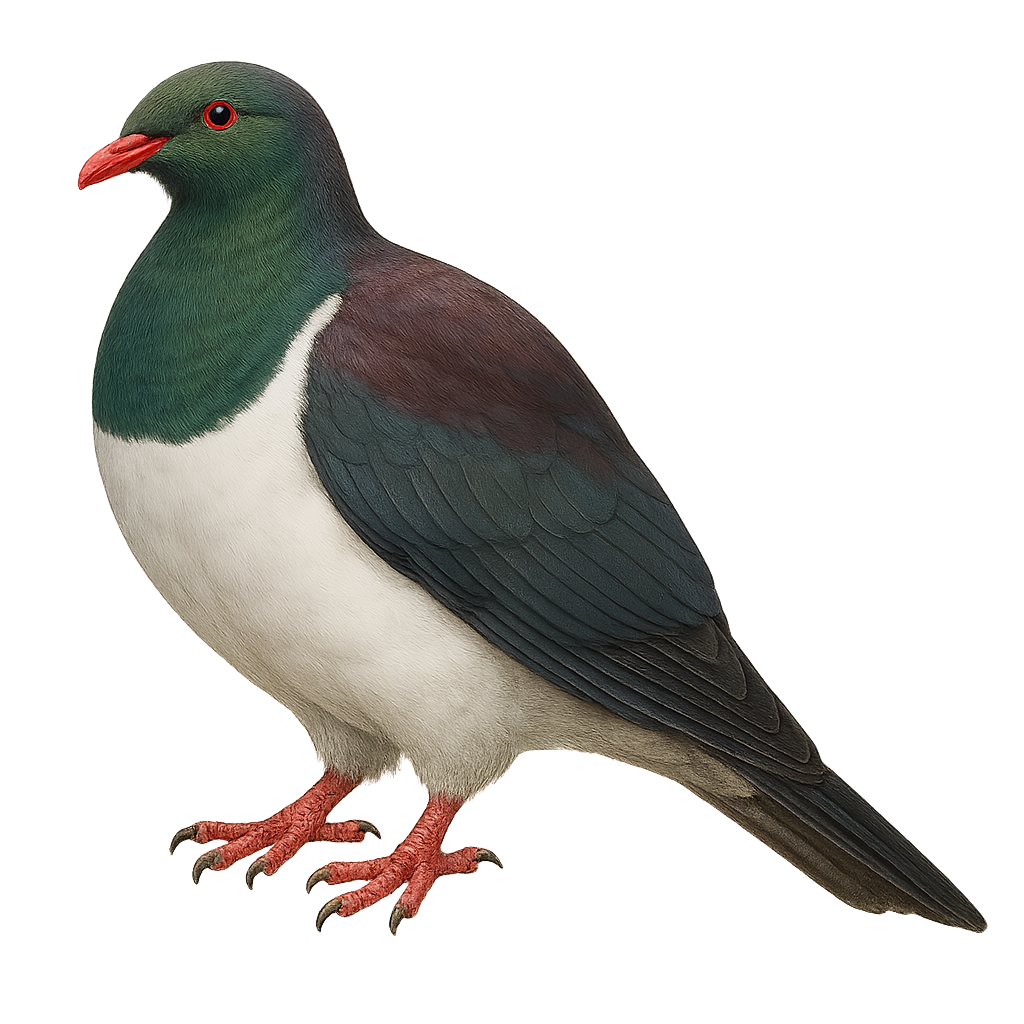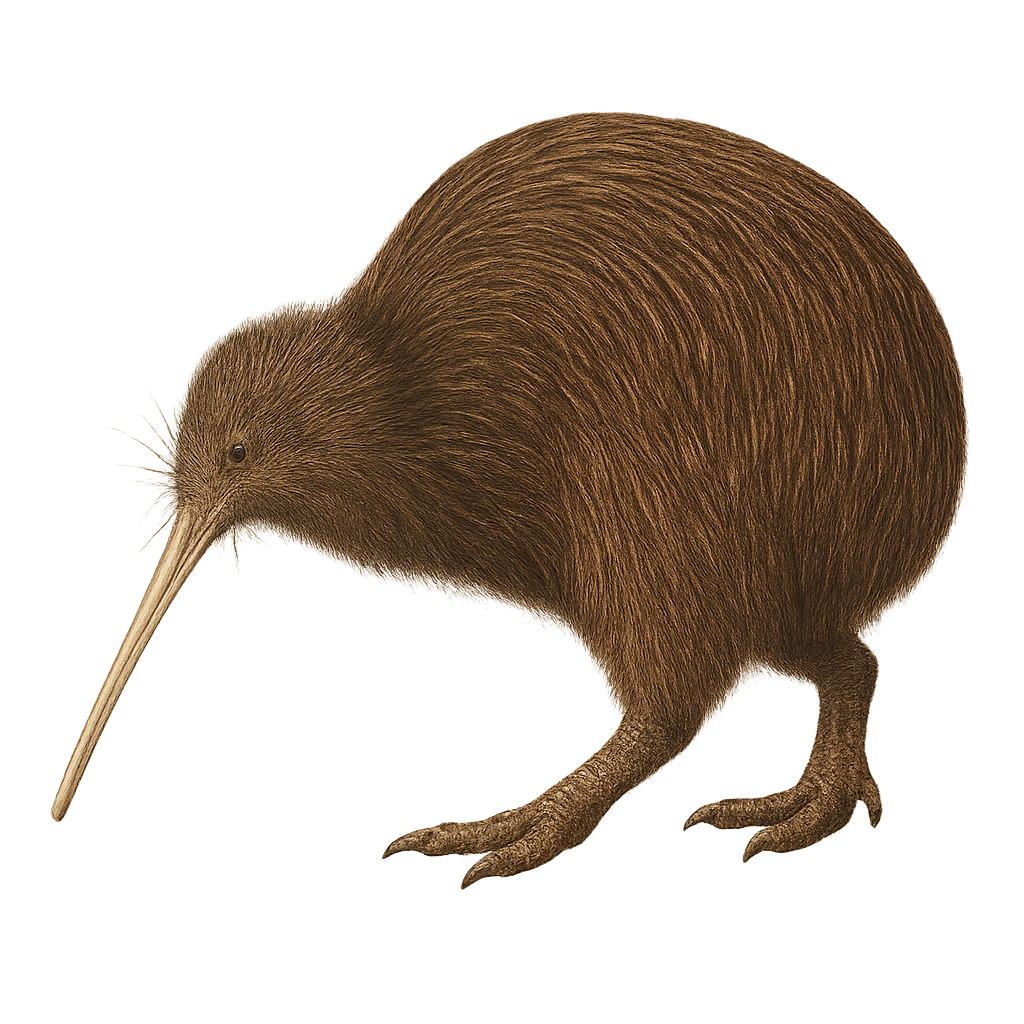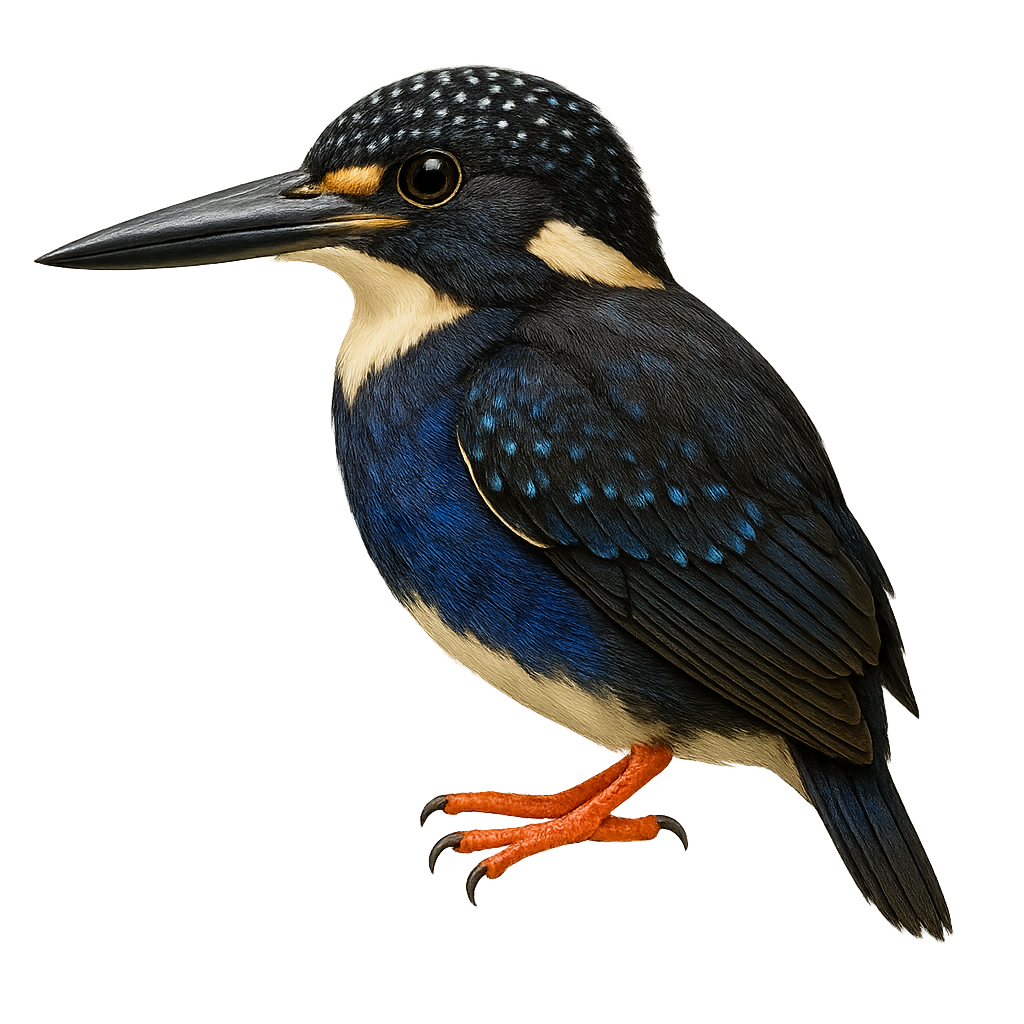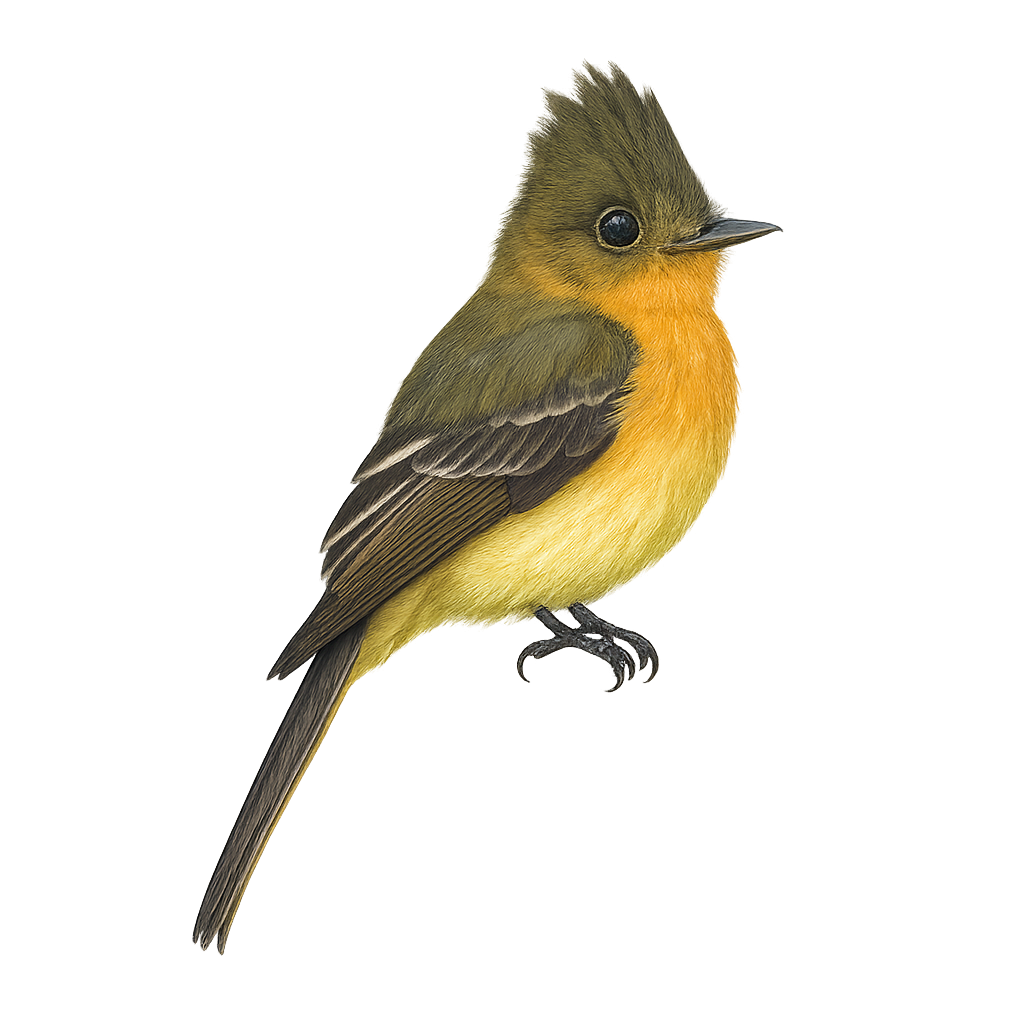The Nelson's Sparrow, or Ammospiza nelsoni, is a small passerine bird primarily inhabiting the salt marshes and wet meadows of North America. It is recognizable by its distinctive plumage, featuring a gray-blue head, orange cheeks, and black streaks on its back. This sparrow is a migratory bird, breeding in northern regions and wintering along the Atlantic coast. It primarily feeds on seeds and insects, which it finds by foraging in dense vegetation. Although relatively discreet, its melodious song is often heard in spring. The Nelson's Sparrow is a vulnerable species due to the loss of its natural habitat, caused by marsh drainage and coastal development.
The Northern Pintail is a migratory species of duck, easily recognizable by its slender body and long neck, which gives it an elegant and distinctive silhouette. The male during the breeding season has a colorful plumage, with a green head, brown body, and long bill. The female, on the other hand, has more subdued plumage, brown speckled, adapted for camouflage.
This duck primarily inhabits wetland areas, such as marshes, ponds, and rivers, where it feeds on aquatic vegetation, seeds, and insects. The Northern Pintail is a long-distance migrant, leaving its breeding grounds in Europe and Asia to head to Africa or the Middle East during the winter. Although still fairly widespread, the species is threatened by the loss of its natural habitat due to wetland drainage and intensified agriculture.
The Northern Shoveler is a medium-sized dabbling duck, measuring between 44 and 56 cm in length with a wingspan of 70 to 85 cm. The breeding male features an iridescent dark green head, white chest, chestnut flanks, and a large spatula-shaped bill. The female has mottled brown plumage and a similarly shaped bill. This species inhabits shallow wetlands, such as marshes, ponds, and floodplain meadows rich in aquatic vegetation. It feeds by filtering water with its specialized bill, consuming primarily plankton, aquatic insects, crustaceans, mollusks, and seeds. Migratory, the Northern Shoveler breeds in Europe and Asia, wintering in Africa, India, and Southeast Asia. Although listed as Least Concern by the IUCN, it is sensitive to wetland degradation.
The Northern Caracara is an imposing bird of prey, easily recognizable by its distinctive black and white plumage, with a bright orange head and a powerful beak. This raptor, often mistaken for an eagle due to its behavior and size, is an opportunistic scavenger, feeding primarily on animal carcasses, but it can also hunt live prey, such as small mammals and reptiles.
The Northern Caracara primarily inhabits open areas such as savannas, grasslands, and roadside habitats, where it spends its time scouring the ground for food. It is well adapted to life in varied environments, notably in the southern United States, Mexico, Central America, and South America. Although its population is relatively stable, the species is sometimes threatened by habitat destruction and illegal hunting.
The Northern Cardinal, or Cardinalis cardinalis, is a striking bird found in North American gardens, easily recognized by the male's bright red plumage and the female's brownish-red hue. This medium-sized passerine, measuring about 21 to 23 cm in length, features a distinctive crest and a black mask around its beak. It is commonly seen in forests, gardens, and shrublands. Its melodious and varied song is a key aspect of its behavior, used to mark territory and attract mates. The Northern Cardinal is a non-migratory bird, known for its year-round territorial fidelity.
The Nordmann's Greenshank, or Tringa guttifer, is a rare and endangered wader bird belonging to the Scolopacidae family. It is identifiable by its greyish plumage with distinctive white spots on the belly and wings. Its long, slightly curved bill is perfect for probing mudflats for food. This bird migrates over long distances, breeding in the coniferous forests of the Russian Far East and wintering in the wetlands of Southeast Asia. Its population is declining due to habitat loss and hunting. Conservation efforts are crucial for its survival.
The Northern Pygmy Owl, Glaucidium gnoma, is a tiny raptor measuring just 16 to 18 cm, active both during the day and at night. It has a compact body, bright yellow eyes, and a round head with no ear tufts. Found mainly in coniferous and mixed forests of western North America—from Canada to Mexico—it is a fierce hunter despite its size, preying on small birds and rodents, sometimes larger than itself. It often nests in old woodpecker cavities. Though discreet, it is curious and can occasionally be approached quite closely. The species is considered stable, depending on the presence of mature forests. No black or melanistic individuals are known.
The Northern Hawk Owl is a unique nocturnal raptor, easily recognized by its large yellow eyes and its plumage marked with white and gray-brown patterns. It has a slender build with a round head, small size, and broad wings adapted for silent flight. It is primarily found in coniferous forests of northern regions, particularly in wooded areas of North America, Northern Europe, and Russia.
This raptor primarily hunts small mammals, birds, and insects, which it catches with its silent flight skills. The Northern Hawk Owl is also known for its ability to hunt during the day if necessary, especially during the breeding season. It is a relatively discreet bird, often feeding near open areas where it can spot its prey. While its population remains stable in some regions, it is threatened by deforestation and the loss of its natural habitat. It is protected in many areas to preserve its coniferous forests.
The Northern Spotted Owl is a subspecies of the spotted owl, primarily found in the old-growth coniferous forests of the western coast of North America. It is medium-sized, with dark eyes and brown plumage speckled with white. This owl is a nocturnal predator, feeding mainly on small mammals. It is known for its reliance on mature forest habitats, making it vulnerable to deforestation. Due to habitat loss and competition with the barred owl, it is classified as a threatened species. Conservation of its natural habitats is crucial for its survival.
The Northern Bobwhite, or Colinus virginianus, is a medium-sized bird belonging to the Odontophoridae family. It is easily recognizable by its brown speckled plumage and distinctive white-striped head. This bird is primarily terrestrial and prefers open habitats such as grasslands, agricultural fields, and sparse forests. It is known for its characteristic call, a clear and melodious "bob-white," often heard at dusk. The Northern Bobwhite is a social bird, living in groups called "coveys" outside the breeding season. Although widespread in North America, its populations have declined due to habitat loss and intensive agriculture.
The neotropic cormorant is a medium-sized waterbird (65–75 cm) with glossy black plumage accented by bronze tinges on the back and white underparts. It inhabits freshwater bodies and coastal areas, fishing in groups through successive dives to catch fish and crustaceans.
The Natal Robin is a medium-sized songbird known for its vibrant plumage and melodious song. It features a grey head and back, with a bright orange throat and belly. This bird is often seen in dense forests and shaded gardens of southern Africa. It is known for its curious nature and territorial behavior, often spotted hopping on the ground in search of insects and fruits. Although generally solitary, it can sometimes be seen in small family groups. Its ability to adapt to various habitats makes it a common resident within its range.
The Nicobar Drongo, scientifically known as Dicrurus fuscipennis, is a medium-sized bird endemic to the Nicobar Islands in the Indian Ocean. It is characterized by its glossy black plumage and long forked tail. This bird primarily inhabits the tropical rainforests of these islands, where it feeds on insects and small invertebrates. The Nicobar Drongo is known for its territorial behavior and its ability to mimic the sounds of other birds, which helps it deceive predators and protect its territory. Although its habitat is limited, it is not currently considered threatened, but deforestation could pose a long-term risk.
The Northern Red Bishop is a small African bird with striking plumage, especially during the breeding season. Males display bright red feathers with black wings and tail, while females and non-breeding males have duller, brownish tones. These birds inhabit savannas, marshes, and wet grasslands in sub-Saharan Africa. They are known for their social behavior and spectacular courtship displays, where males puff up their feathers to attract females. Their diet mainly consists of seeds, but they also consume insects. Although they are widespread, their habitat is threatened by deforestation and agricultural expansion.
The Northern Gannet is a large seabird, easily recognized by its brilliant white plumage and large black-tipped wings. It measures about 85 cm in length, with a wingspan of 170 to 180 cm, and weighs between 2.5 and 3.5 kg. Its long, pointed beak, along with its pale yellowish head, makes it a formidable predator in its marine environment. The Northern Gannet primarily inhabits the rocky coasts of the North Atlantic, where it nests in impressive colonies, often situated on steep cliffs. This bird is an excellent diver, catching its prey by plunging dramatically from heights of up to 30 meters, reaching speeds in excess of 100 km/h. Its diet mainly consists of fish, which it catches either in flight or by diving underwater. While the species is not endangered, it faces risks such as marine pollution, declining fish populations, and disturbances to its nesting sites.
The Nazca Booby is a striking seabird native to the Galápagos Islands, recognized for its bright white plumage contrasted by black wings and tail. It has a sturdy, pointed bill, often yellowish, ideal for catching fish and squid by diving skillfully into the ocean. This bird nests in dense colonies on cliffs and rocky islets, creating rudimentary nests on the ground. Pairs are monogamous and share parental duties, typically incubating two eggs. The chicks, covered in white down, rely on adults for food until they are ready to fledge.
The Nahan's Francolin, or Francolinus nahani, is a shy and elusive bird native to the dense tropical forests of Central Africa, particularly in the Democratic Republic of the Congo and Uganda. It is characterized by its speckled brown plumage, reddish head, and black bill. Preferring dense undergrowth, it feeds mainly on seeds, insects, and small invertebrates. Although its behavior is not well-documented, it is generally considered shy and difficult to spot. Its population is declining due to deforestation and hunting, making it vulnerable. Conservation efforts are essential to ensure its long-term survival.
The Northern Fulmar, or Fulmarus glacialis, is a robust seabird often mistaken for a gull due to its grey and white plumage. However, it is stockier with a short, hooked bill. This bird is primarily found in Arctic and subarctic regions, nesting on coastal cliffs. Known for its graceful gliding flight, it can cover long distances at sea. The Northern Fulmar feeds mainly on fish, crustaceans, and marine waste. It is also famous for its olfactory defense, emitting a foul-smelling oil to deter predators. Although generally not very shy, it remains cautious of human intrusions.
The North Island Kōkako, or Callaeas cinereus, is a bird endemic to New Zealand, specifically the North Island. This bird is easily recognizable by its ash-gray color and distinctive blue wattles on the sides of its beak. It primarily inhabits dense, humid forests where it feeds on fruits, leaves, and insects. Although capable of flight, it often prefers to move by hopping from tree to tree. The North Island Kōkako is a territorial and monogamous bird, forming pairs that vigorously defend their territory. Unfortunately, it is threatened by habitat loss and predation by introduced species, leading to a significant decline in its population.
The Narcissus Flycatcher, Ficedula narcissina, is a small passerine bird in the Muscicapidae family, primarily found in East Asia. It is easily recognizable by its striking plumage: males have a black head with a bright yellow throat, a black back, and a white belly. Females are duller with brown and yellow hues. This migratory bird breeds in temperate and subtropical forests, preferring dense wooded habitats. It primarily feeds on insects, catching them in flight. The Narcissus Flycatcher is known for its melodious song, often heard during the breeding season. Although its conservation status is currently "least concern," deforestation poses a potential threat to its natural habitats.
The Narrow-billed Woodcreeper is a medium-sized bird, distinguished by its long, slender bill, perfect for probing bark and crevices in search of insects. Its brownish plumage, with lighter shades on the belly, allows it to blend seamlessly into its forest habitat. This bird is primarily arboreal, moving nimbly along tree trunks. It is often seen in small groups or pairs, especially during the breeding season. The Narrow-billed Woodcreeper is a resident of tropical and subtropical forests but can also be found in open wooded areas. Although relatively common, preserving its habitat is crucial for its long-term survival.
The Narrow-billed Woodcreeper is a fascinating bird, primarily found in the tropical forests of South America. It is distinguished by its long, slender bill, perfect for extracting insects from tree bark. Its reddish-brown plumage allows it to blend seamlessly into its environment, making it difficult to spot. Often seen climbing tree trunks, it uses its stiff tail for support. Though discreet, its melodious song often resonates through the canopy. This bird plays a crucial role in the ecosystem by controlling insect populations. Its ability to adapt to various habitats, including degraded forests, is a testament to its resilience.
The Northern Carmine Bee-eater, Merops nubicus, is a striking bird with vibrant colors, primarily carmine red with blue-green wings and tail. Known for its graceful flight, it skillfully catches insects mid-air, particularly bees and wasps. This sociable bird lives in colonies along rivers and lakes in sub-Saharan Africa, digging burrows in sandy banks for nesting. It is a partial migrant, moving seasonally to follow prey availability. Although its habitat is threatened by human activity, it is currently listed as Least Concern by the IUCN.
The Northern Jacana, or Jacana spinosa, is a waterbird known for its long legs and elongated toes, allowing it to walk effortlessly on lily pads and other floating vegetation. It features a reddish-brown plumage with bronze-tinted wings and a bright yellow bill extending into a frontal shield. This bird is primarily found in the wetlands of Central America and the southern United States. The Northern Jacana is noted for its polyandrous behavior, where the female mates with multiple males, each taking care of a nest. It feeds mainly on insects, small mollusks, and seeds found on the water's surface.
The Northern Screamer, or Chauna chavaria, is a waterbird from the Anhimidae family, mainly found in Colombia and Venezuela. This bird is recognizable by its dark gray plumage, long legs, and piercing call that echoes through the marshes and wetlands it inhabits. The Northern Screamer is an excellent swimmer and primarily feeds on aquatic plants. It is often seen in pairs or small family groups. Although its appearance is imposing, it is relatively not very shy and can be approached with caution. Its population is currently stable, but habitat destruction remains a potential threat.
The kereru, or New Zealand pigeon, is an endemic bird of New Zealand, known for its iridescent plumage and large size. It features a dark green head and neck, a white belly, and metallic sheen on its back. Measuring about 50 cm in length, it is often seen in native forests, parks, and urban gardens. The kereru plays a crucial role in seed dispersal, aiding forest regeneration. Although its flight is powerful, it is often described as clumsy, making it easily identifiable. Its population is stable, but it remains vulnerable to introduced predators and habitat loss.
The North Island Brown Kiwi, or Mantell's Kiwi, is a flightless bird endemic to New Zealand. It is characterized by its shaggy brown plumage, long slender bill, and nostrils located at the tip of the bill. This nocturnal bird feeds primarily on invertebrates, which it detects using its exceptional sense of smell. It inhabits dense forests, scrublands, and grasslands. The North Island Brown Kiwi is monogamous, forming long-term pairs. The female typically lays one or two eggs per season, which the male incubates. Unfortunately, this species is threatened by introduced mammalian predators and habitat destruction.
The Northern Silvery Kingfisher, or Ceyx flumenicola, is a small, brightly colored bird, primarily blue and orange, found in the humid tropical forests of Southeast Asia. It is renowned for its ability to swiftly dive into water to catch fish and aquatic insects. This kingfisher prefers clear streams and slow-moving rivers, where it can easily spot its prey. Although discreet, it is often noticed due to its sharp, piercing call. Its small size and rapid flight make it difficult to observe, but its beauty makes it a favorite subject for birdwatchers and photographers.
The Northern Tufted Flycatcher, Mitrephanes phaeocercus, is a small bird primarily found in the mountainous forests of Central and South America. It is distinguished by its brown tail and plumage in shades of gray and brown. This bird is often seen catching insects in flight, thanks to its agile and quick movements. It is also known for its melodious song, which echoes in the forests where it resides. Although it is relatively not very shy, it prefers dense habitats where it can hide from predators. Its presence is an indicator of the health of forest ecosystems.
The Nicobar Pigeon, or Caloenas nicobarica, is a fascinating bird known for its iridescent plumage with metallic shades of green, blue, and copper. It is endemic to the islands of the Indian and Pacific Oceans, particularly the Nicobar Islands, from which it gets its name. This medium-sized pigeon measures about 40 cm in length and is distinguished by its short white tail, contrasting with its colorful body. The Nicobar Pigeon is primarily frugivorous, feeding on fruits, seeds, and small invertebrates. It plays a crucial role in seed dispersal, contributing to the regeneration of tropical forests. Unfortunately, it is threatened by hunting and habitat loss.




